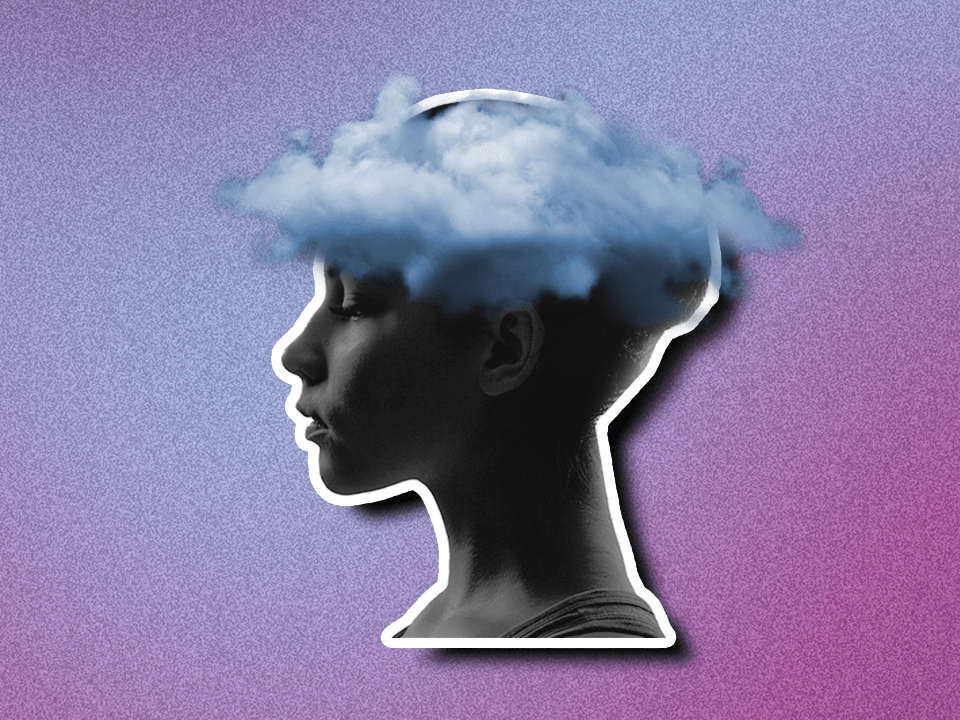Here’s What Maladaptive Daydreaming Really Feels Like
These vivid and repetitive daydreams can really mess with your life.
Everyone daydreams from time to time—kissing your crush, popping off on your condescending boss, or vacationing somewhere with crystal clear water and palm trees—but what if elaborate daydreams take over your life? What happens when daydreaming makes it hard for you to function, and you’d much rather live the life you’re imagining in your head than the life that’s right in front of you? Enter: Maladaptive daydreaming.
What even is maladaptive daydreaming?
Daydreaming actually exists on a spectrum. On one end, you have the “mind wandering” type of daydreaming, which is brief, typically mundane in subject matter, and doesn’t impair functioning in any way, says Eli Somer, PhD, a clinical psychologist and maladaptive daydreaming researcher specializing in trauma and dissociative disorders.
On the opposite end of the spectrum, you have maladaptive daydreaming—a term coined by Dr. Somer himself in a 2002 qualitative study of six patients in his practice, where he describes it as “extensive fantasy activity that replaces human interaction and/or interferes with academic, interpersonal, or vocational functioning.” In fact, there will be clear immersive visuals, sounds, and emotional elements, so they’re way more intense than run-of-the-mill daydreams and typically include elaborate storylines that continue over time, he adds. So basically, it’s when you daydream so vividly and frequently that it negatively impacts your life. (BTW, you won’t find maladaptive daydreaming in The Diagnostic and Statistical Manual of Mental Disorders, aka the DSM-5-TR, but the booming Maladaptive Daydreaming subreddit and #maladaptivedaydreaming TikTok communities suggest there are tons of people who can relate.)
These daydreams can happen voluntarily and involuntarily, but in most cases, you have some control over what’s happening. “Almost without exception, people know how to activate and stop daydreaming,” Dr. Somer says. Still, some daydreamers have a compulsive nature, which can make the daydreams feel involuntary, he explains. Some situations, like solitude, jogging, driving, or hearing certain music can trigger daydreaming, Dr. Somer says. Also, maladaptive daydreamers often incorporate some kind of movement (rocking, pacing, or twirling something) or play music to get into the zone or enhance the daydreaming, he adds.
Maladaptive daydreams can last for hours on end, and if you’re prone to them, you might even find yourself realizing you spent a whole day thinking about those complex stories, Dr. Somer says. If that sounds trance-like, you’re not totally wrong, Dr. Somer says, comparing this intense focus on the daydream to a “state of self-hypnosis or a trance.”
What causes maladaptive daydreaming?
Research about maladaptive daydreaming is limited (hence why it’s not in the DSM-5-TR), but there are several theories about what might be behind it, says Colin Ross, MD, a dissociation and trauma-related disorder specialist who researches this behavior. It’s often linked with other mental health conditions, like anxiety, depression, obsessive-compulsive disorder, dissociative disorders, and post-traumatic stress disorder (PTSD), adds Dr. Ross. “Often, it provides an escape from intolerable feelings and conflicts, emptiness, stressful external conditions, and/or unresolved trauma.” And because it can hurt when you come out of a daydream and are hit with reality, that can worsen depression and make you want to daydream even more, suggests a 2020 study by Dr. Ross.
This checks out for Allie Priestley, a content creator who has been sharing her experience with maladaptive daydreaming on TikTok (one of her videos currently has almost 900,000 views) and has struggled with maladaptive daydreaming since she was a kid. She thinks her daydreaming is linked to childhood trauma associated with growing up in a Christian cult and struggling with undiagnosed autism and ADHD. “I did not understand my brain, my autism, or why I could not deal with the world,” Priestley, 34, says.
When does it become a mental health concern?
As you can see, it’s easy to get caught up in these daydreams and repeatedly revisit them because it can feel rewarding and enjoyable to live in this fantasy life—especially when it’s an escape from the life you’re living. But by spending so much time in daydreams, you can miss out on life experiences, have trouble at work or school, and avoid addressing underlying issues that might cause this behavior—that’s when there’s cause for concern, Dr. Somer explains. “As any behavior or substance that is so rewarding, it’s potentially addictive,” he adds.
At first, Priestley’s daydreaming “seemed to just happen out of nowhere—and I couldn't control it,” she says. “But as I got older, like in high school, it became extremely intentional.” She would stay home from school, pretending she was sick, to immerse herself in her vivid daydreams, which typically involved some sort of romantic relationship and/or being extremely famous and successful. (Like many others, she used music and sometimes the settings of TV shows to help her sink into the daydreams.) As an adult, she’d plan to take a week or two off work so she could stay in her room, drink alcohol, and daydream the time away.
“The daydreaming just helped me cope with being alive, and if I could stay home and do that instead, I did,” she says, adding that daydreams can feel “better than being in the real world.” See why it’s so hard to stop maladaptive daydreaming?
Back then, she had no idea there was a name for what she was experiencing and felt intense shame. “I thought I was absolutely crazy,” she says. It wasn’t until a couple of years ago while scrolling through TikTok that Priestley learned about maladaptive daydreaming and that she was far from alone. “The first time I saw a girl talk about it—I'll never forget it. It literally changed my entire existence,” she says.
How can you manage maladaptive daydreaming?
Your options for dealing with maladaptive daydreaming are limited, TBH, because it’s such a niche and misunderstood phenomenon, even among mental health pros. So why isn’t it in the DSM if so many people experience it? Well, getting a new mental health disorder into the DSM requires a lot of research to meet predetermined guidelines. “The scientific literature on maladaptive daydreaming is growing steadily, and includes multiple samples in a range of different languages and cultures. A variety of different statistics on maladaptive daydreaming have been published—however, more work is required for the literature to meet the requirements for a new disorder set out by the American Psychiatric Association,” Dr. Ross explains.
All of this said, Dr. Somer says “we're getting there.” Inclusion in a future version of the DSM could be closer than we think, leading to more validation for a phenomenon that so many people experience.
So, what can you do in the meantime if maladaptive daydreaming is interfering with your life? Researchers like Dr. Somer and Dr. Ross have identified a couple of things that can help. First, it’s important to work with a mental health pro who can help identify and treat underlying mental health conditions, like PTSD, anxiety, or OCD.
Then, mindfulness training and focusing on the “external reality” comes into play, Dr. Somer says. Basically, mindfulness helps you learn to focus on the here and now instead of turning your focus inward and on the daydreams.
As for Priestley, she’s been able to resist the pull into her fantasies more than ever now that she has finally gotten clarity on being autistic and having ADHD and complex PTSD. “Now I feel like I actually belong somewhere and I have a place in the world and I don't have to escape as much,” she says.
So if you think you might be a maladaptive daydreamer, don’t hesitate to share your experience with a therapist. If you don’t have someone you can talk to about this, try searching for a licensed mental health professional who specializes in trauma, dissociative disorders, depression, anxiety, and/or OCD. Help is out there, and it’s possible to enjoy the life right in front of you, not just in your daydreams.
Wondermind does not provide medical advice, diagnosis, or treatment. Any information published on this website or by this brand is not intended as a replacement for medical advice. Always consult a qualified health or mental health professional with any questions or concerns about your mental health.




